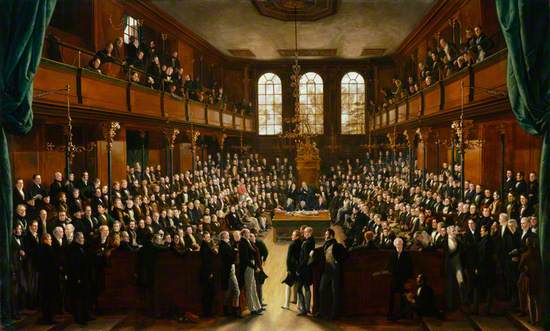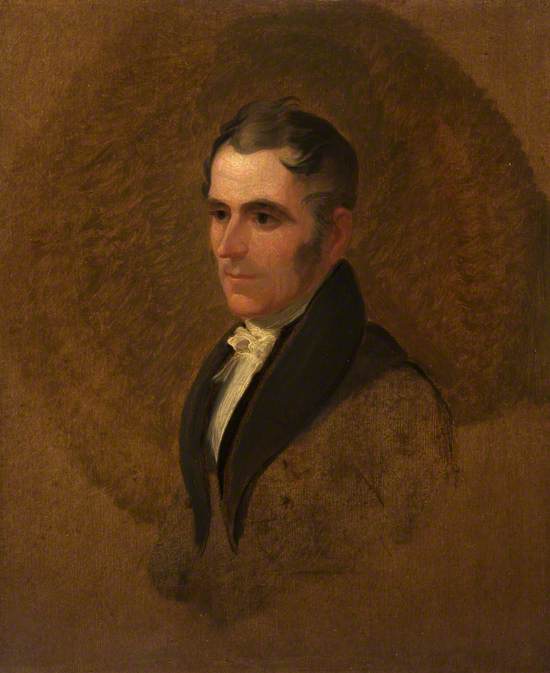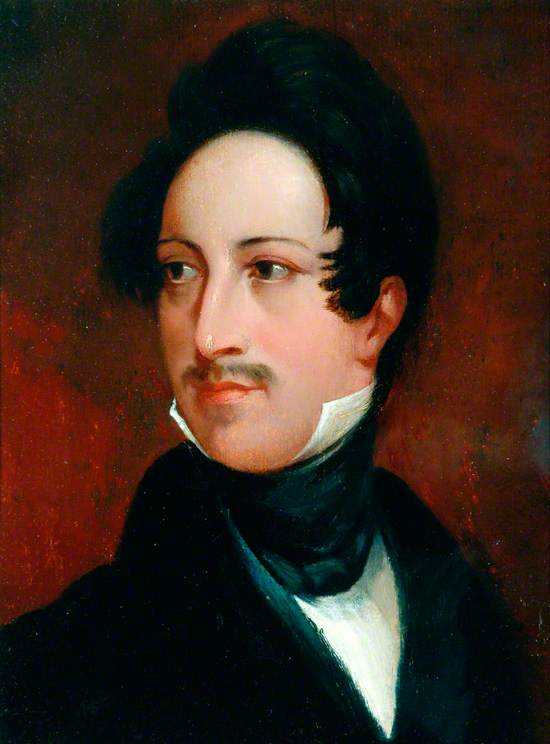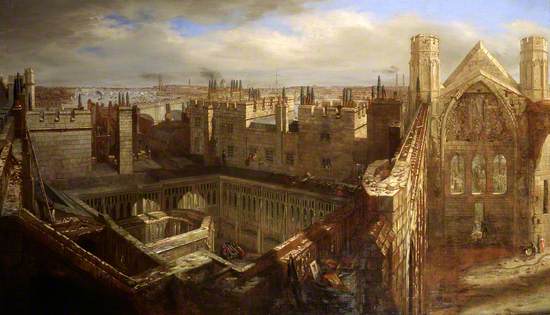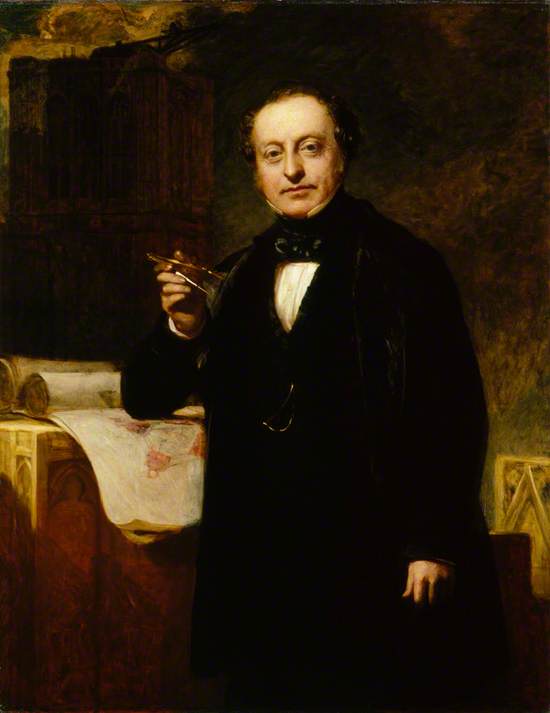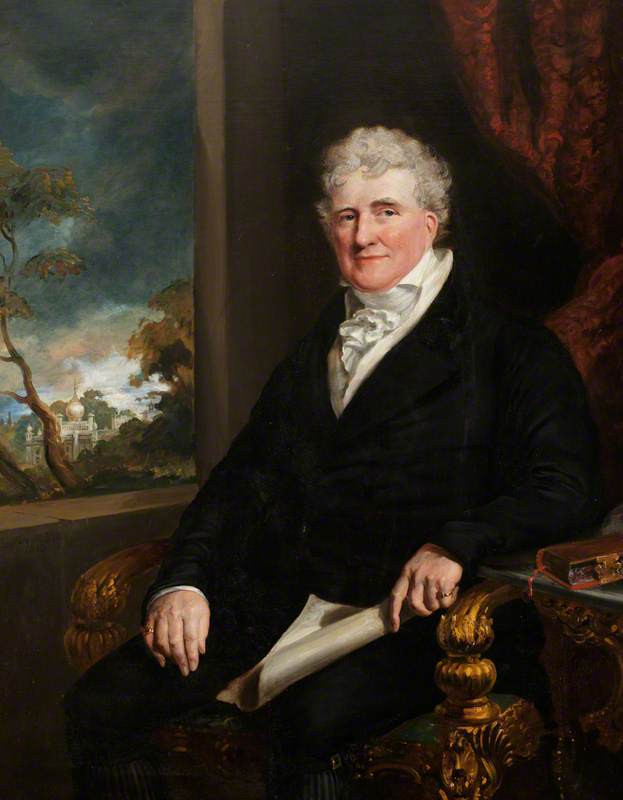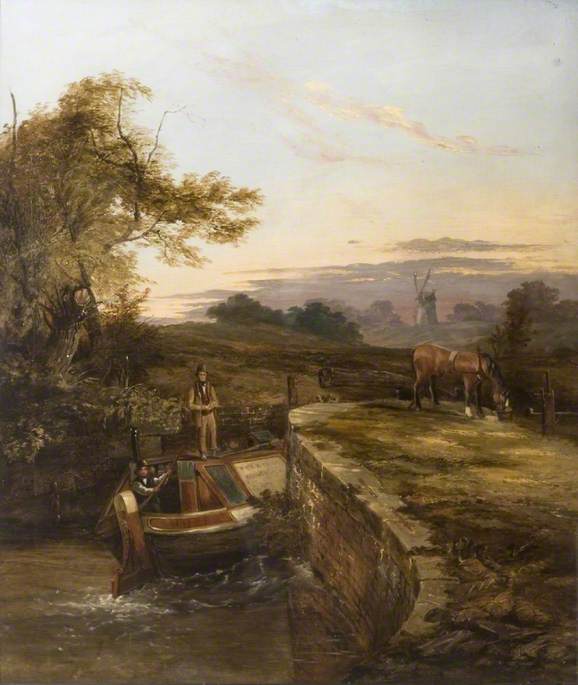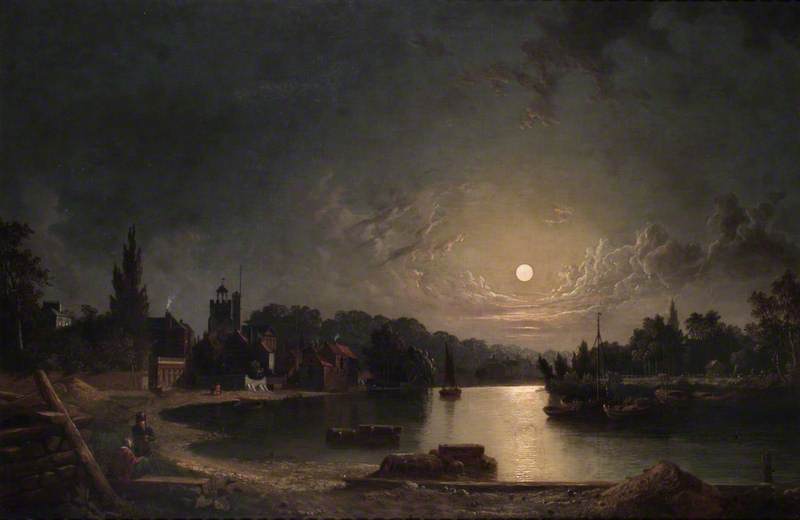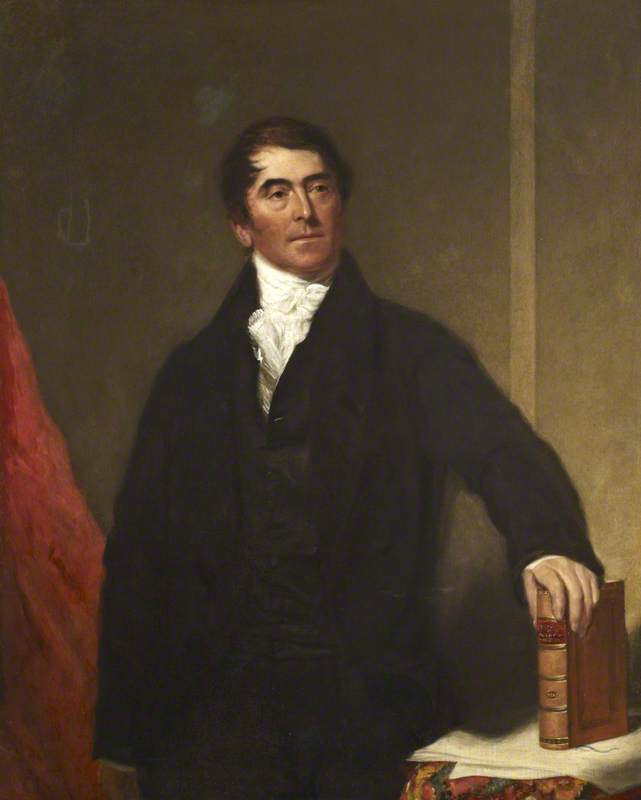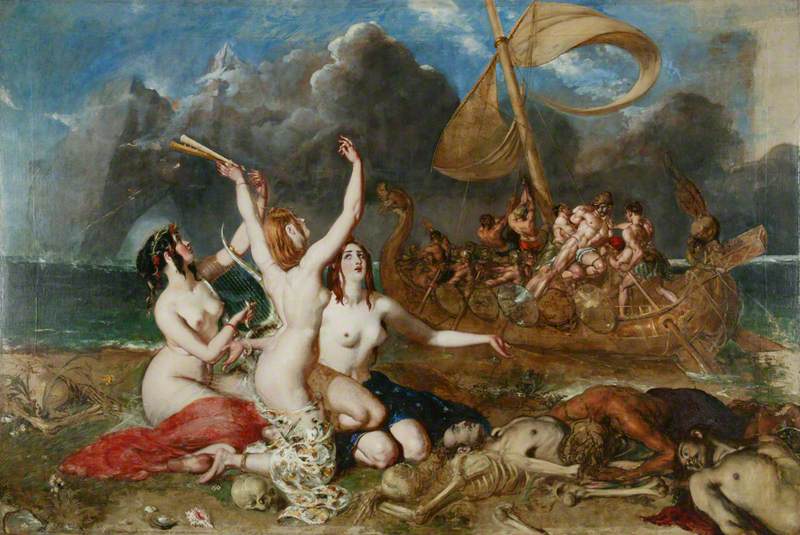As a researcher at the History of Parliament, studying Britain's elections, MPs and the workings of Parliament between 1832 and 1868, I find Art UK's website an invaluable resource. Having already put together a curation on elections, I wanted to focus in this selection on Parliament and the people associated with it, Between 1832 and 1868, MPs used three different sets of buildings, as the destruction of much of the old Palace of Westminster by fire in 1834 forced them to occupy temporary accommodation while a new Palace was built. As well as looking at depictions of Parliament's buildings, this curation considers the people who made and used them.
George Hayter's House of Commons
Hayter had already enjoyed success with a previous large-scale parliamentary painting, depicting Queen Caroline's trial in the House of Lords in 1820. This work shows the reformed House of Commons in February 1833. It features 375 individual portraits, with MPs paying for the privilege of being included. A handful of leading politicians from the Lords also appear. Hayter completed it in 1843 & displayed it in London, Birmingham, Edinburgh & Glasgow. Contemporary critics praised the 'very faithful and spirited' portraits of MPs, although some found the composition 'monotonous'. The government declined to purchase the painting for the nation in 1843, but eventually paid £2,000 for the work in 1859.
George Hayter (1792–1871)
Oil on canvas
H 542 x W 346 cm
National Portrait Gallery, London
John Fielden, MP for Oldham, 1832-47
This study for Hayter’s painting shows one of the MPs for the newly created borough of Oldham, which was given two members by the 1832 Reform Act. John Fielden was elected in December 1832 alongside his fellow Radical, William Cobbett, who also appears in Hayter’s painting. As an industrialist and a Unitarian, Fielden came from a very different background from the members of the landed elite who had previously dominated the Commons. He became prominently associated with the cause of factory reform, culminating in his successful introduction of the Ten Hours Act in 1847, & was a leading opponent of the new poor law.
Samuel Adlam Bayntun, MP for York, 1830-33
Alongside its many depictions of leading politicians, the Art UK website has proved invaluable in tracking down portraits of some of the more obscure members of the 19th century Commons. Samuel Adlam Bayntun was MP for York from 1830 until his untimely death from scarlet fever in September 1833, aged just 29. He was described as ‘a dashing young man’, which this portrait captures. An army officer, he was first elected for York in 1830 as a ‘true blue’ Tory, but voted for the Grey ministry’s reform bill. This led some of his former supporters to back another candidate in 1832, but Bayntun was re-elected & often voted with the Whigs & the Radicals in his final parliamentary session.
William Etty (1787–1849)
Oil on panel
H 41 x W 31 cm
Fairfax House
John Rickman, Clerk Assistant in the House of Commons
Alongside lesser known MPs such as Bayntun, the Art UK website includes a few portraits of 19th century Commons officials. John Rickman (1771-1840) was Clerk Assistant in the House of Commons from 1820 until his death. He and his family lived in a house in New Palace Yard and were eyewitnesses to the fire which destroyed much of the Palace of Westminster on 16 October 1834. His daughter Frances produced one of the few known depictions of the ‘ventilator’ above the pre-1834 Commons chamber, where women were able to listen to debates.
Samuel Lane (1780–1859)
Oil on canvas
H 61 x W 50.8 cm
Parliamentary Art Collection
Destruction of the old Palace of Westminster by fire
The dramatic events of 16 October 1834, when a huge fire destroyed much of the old Palace of Westminster, prompted numerous artistic depictions, with at least eight to choose from on the Art UK website. J. M. W. Turner & Peter de Wint were among the artists who produced paintings of the fire. This work, by an unknown artist, shows the crowds watching from the bridge and from the river as the buildings continue to burn. The fire had begun with a chimney fire in the House of Lords, caused by the careless burning of wooden tally sticks (a form of tax receipt) in the underfloor furnaces, and spread rapidly. It would take five days before the flames were finally extinguished.
unknown artist
Oil on canvas
H 25.4 x W 35.6 cm
Parliamentary Art Collection
The aftermath of the October 1834 fire
The devastation caused by the 1834 fire is evident in this painting, which shows the area formerly occupied by the House of Commons. The artist’s vantage point was the roof of Westminster Hall, one of the few parts of the old Palace which did survive the fire. MPs were forced to use temporary accommodation, moving into the Court of Requests, which had previously been the chamber of the House of Lords. Making way for them, the Lords had to decamp to the Painted Chamber. This temporary space gave the Commons the opportunity to experiment, adding a separate reporters’ gallery in 1835 and a second division lobby in 1836.
George Johann Scharf (1788–1860)
Oil on paper
H 80.5 x W 140 cm
Parliamentary Art Collection
Charles Barry, architect of the new Palace of Westminster
Charles Barry (1795-1860) was the winner – from 97 anonymised entries – of the architectural competition to design a new Houses of Parliament, on which he collaborated with the artist and designer Augustus Welby Northmore Pugin (1812-52). When he saw the old Palace of Westminster burning in 1834, he declared, ‘What a chance for an architect!’ Although best known for his work at Westminster, Barry was a prolific architect, designing numerous churches, remodelling several country houses and undertaking many other major commissions for public buildings, including the Manchester Athenaeum and Halifax Town Hall.
John Prescott Knight (1803–1881)
Oil on canvas
H 144.8 x W 111.8 cm
National Portrait Gallery, London
The new Palace of Westminster nearing completion
This painting from 1857 shows the new Palace of Westminster almost reaching completion, with scaffolding remaining on one of the towers, and the Clock Tower, whose first stone had been laid in 1843, still lacking its faces. The clock was finally installed in April 1859 and began keeping time on 31 May. While the House of Lords had moved into its new chamber in 1847, MPs had to wait several more years. Following a test of the new Commons chamber and its division lobbies in May 1850, alterations had to be made to improve the acoustics. The Commons finally moved into its new home in 1852.
Henry Pether (1800–1880)
Oil on canvas
H 82 x W 112.5 cm
Parliamentary Art Collection
